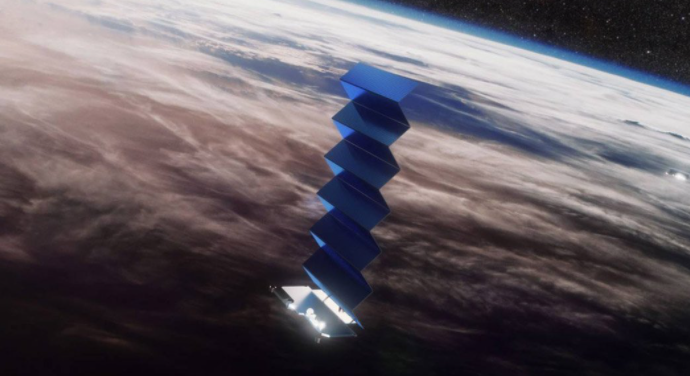NASA sent a letter to the U.S. Federal Communications Commission (FCC) citing concerns about Starlink’s plan to launch 30,000 satellites into space. The U.S. space agency cites risks that SpaceX’s subsidiary could pose to space missions, photos taken by the Hubble telescope and, ultimately, to monitoring asteroids whose impact can be lethal to Earth.
The letter sent to the FCC was signed by Samantha Fonder, representative of NASA’s Interagency Commercial and Space Transportation Group. The document begins with the space agency citing possible impacts of Starlink’s bidding on human space travel, or even scientific missions:
“With the increase in proposals for large constellations of satellites to the FCC, NASA is concerned about a potential significant increase in the frequency of conjunctions [when two celestial bodies approach or collide] and possible impacts on scientific missions or manned space missions.”
While it assesses the negative impact of SpaceX’s bid to put another 30,000 Starlink satellites into orbit, the agency does not ask for the rejection of the request. NASA says the constellation project will require extensive “communication and coordination” between the parties involved.
The satellites SpaceX wants to put into orbit are Gen2 type. In all, Elon Musk’s company — which is in the running for the top of the space travel market competing with companies like Amazon — is already licensed to launch 12,000 satellites. In space, 1,900 company equipment already operates. But a solar storm will cause 40 casualties in SpaceX’s operating equipment contingent.
NASA told the FCC that nearby satellites, if launched, could increase the risk of object collision on space travel.
SpaceX’s plan would double the amount of traceable objects in space, which is currently 25,000. “About 6,100 of these celestial bodies have a perigee (at which point an object is closest to Earth in its orbit) below 600 km. SpaceX’s expansion would increase that number by five times, without considering proposals from other companies,” NASA said. The agency continued:
“An increase of this magnitude and confined to this altitude range inherently carries a higher risk of collisions generated by debris, solely based on the number of objects. NASA anticipates that current and current scientific missions and manned launches to be executed will increase in conjunctions.”
Such an impact could even undermine the safety of nasa’s already active equipment in space, as well as the International Space Station. That’s because Starlink’s new satellites could undermine the agency’s ability to monitor collisions and the trajectory of space missions.









